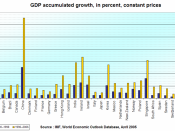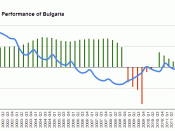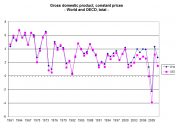Project Title: Okun's Law Okuns Law, first formulated in the 1960's captures an empirical relationship between the unemployment rate and the growth in real output. The relation says that the change in unemployment is given by: DU = a (%DGNP - Potential GNP) However as GDP generally is more useful in international comparisons of economic activity, we have substituted GNP with GDP in the equation. The EU publication referenced also readily provides GDP data.
The coefficient a is given by the slope of the line plotting the relationship and essentially measures the flexibility of the labour force. The coefficient depends in part on firms decisions regarding how to adjust employment in response to temporary deviations in output. These decisions depend in turn on such factors as the firms' internal organisation and the legal and social constraints on hiring and firing. One would thus expect the coefficient to be different across countries and indeed our results verify this where the coefficient is highest in the US where there are few social and legal constraints on firms adjustment of employment and smallest in Japan where Japanese firms offer a high degree of job security to their workers so variations on output have little effect on employment and thus on unemployment.
There is not a perfect relationship between unemployment and growth for a number of reasons. Some workers are needed no matter what the level of output. Training new employees is costly. Thus some firms hoard labour in bad times by keeping staff when demand is low and ask them to work overtime when the demand is high rather than hire new staff. Secondly an increase in the unemployment rate does not lead to a one for one decrease in the unemployment rate. Labour participation increases. Some jobs go to those who...


